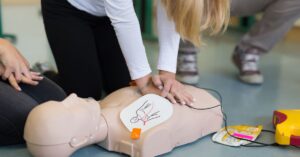Intravenous (IV) access is one of the most fundamental procedures in healthcare, yet choosing the right approach can drastically impact patient outcomes. Whether you’re a new nurse or a seasoned healthcare professional, understanding the differences between peripheral and central IV lines forms the foundation of safe, effective patient care. Making the right choice depends on factors such as treatment duration, medication type, patient condition, and potential complications.
Understanding Peripheral IV Lines
Peripheral intravenous lines represent the most common form of vascular access in healthcare settings. These catheters are inserted into smaller, superficial veins typically found in the arms, hands, or occasionally the feet in pediatric patients. The insertion process for peripheral IVs is relatively straightforward and can be performed by nurses, paramedics, and physicians with appropriate training. Peripheral IVs are most effective for short-term treatments, typically lasting 72 to 96 hours before requiring replacement.
Central IV Lines and Their Applications
Central intravenous lines, also known as central venous catheters, are inserted into large central veins such as the subclavian, internal jugular, or femoral veins. These catheters terminate near or within the right atrium of the heart, providing direct access to the central circulation.
The insertion of central lines requires specialized training and is typically performed by physicians, advanced practice providers, or specially trained nurses. The procedure is more complex than peripheral IV insertion and often requires ultrasound guidance, sterile technique, and post-insertion chest X-ray.
Key Clinical Differences
Peripheral IVs effectively handle most routine medications, maintenance fluids, and standard blood products. They’re appropriate for patients requiring short-term treatment in emergency departments, medical floors, or outpatient settings.
Central lines become necessary when peripheral access proves inadequate or inappropriate. Vesicant chemotherapy agents, high-concentration vasopressors, parenteral nutrition, and hypertonic solutions require central administration to prevent tissue damage.
Risk Profiles and Complications
Peripheral IVs carry relatively low risk complications, with infiltration, phlebitis, and catheter occlusion representing the most common issues. These complications, while uncomfortable, rarely pose serious long-term consequences. Central line complications prove more serious, with pneumothorax, arterial puncture, air embolism, and catheter-related bloodstream infections representing significant risks. However, proper insertion techniques and sterile maintenance substantially reduce these complications.
CPR123 provides a comprehensive peripheral IV certification class, designed to equip healthcare professionals with the skills and knowledge they need to excel. With this training, you can feel confident in your abilities to deliver exceptional care and ensure the utmost comfort and safety for your patients. Choose CPR123 to enhance your expertise and elevate your patient care standards.
Choosing the Right Procedure With Confidence
Understanding the differences between peripheral and central IV lines helps healthcare professionals make informed decisions that optimize patient care while minimizing risks. Each approach serves specific clinical needs, and neither represents a universally superior option.
Success with either modality requires ongoing education, skill maintenance, and adherence to evidence-based practices. Regular competency assessments, proper training, and interdisciplinary collaboration contribute to improved outcomes and reduced complications.







